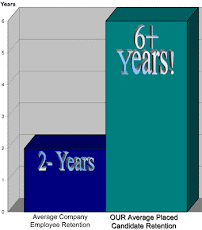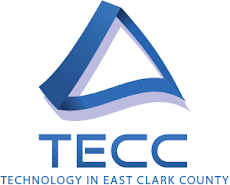
Is your talent pipeline overstocked? Do you go to sleep at night without worrying about key people leaving — or where you will find them in the future?
Chances are the answer to those questions is no. Talent is becoming scarcer, at a time when companies need more of it if they are to compete effectively on a global stage. And companies in the developed world can no longer automatically attract the best people from the rest of the world.
In previous years, top multinational companies could pick the cream of the crop, says Peter Cheese, global managing director for the human performance practice at Accenture, the global management consulting, technology services and outsourcing company. Mr. Cheese is co-author with Robert J.
High-performance businesses — those that consistently lead their industries — are increasingly seeing the competitive potential of better talent management, says Ms. Craig, research fellow at the Accenture Institute for High Performance Business in Boston. “Companies have traditionally focused on financial capital over human capital. Now talent is one of the biggest sources of strategic value to companies.”
How are companies capturing that value? Accenture’s High Performance Business research reveals talent-powered organizations share a distinctive capability that Accenture calls “talent multiplication.” They are able to combine and recombine knowledge and skills throughout the organization to generate superior levels of creativity, adaptability and performance. It requires a consistent and holistic approach across all the dimensions of defining, discovering, developing and deploying talent. Truly talent-powered organizations that achieve talent multiplication can generate extraordinary results in the process.
Defining Talent Needs
Organizations must define talent needs in terms of business strategy, identifying “mission-critical” jobs and key work-force skills. “It goes way beyond taking today’s job descriptions and projecting future head counts against them,” says John Boudreau, professor at the Marshall School of Business at the
Walt Disney Co.’s strategy for its theme parks depends on delighting customers to such an extent that the brand’s magical reputation with families is maintained. “Everyone expects the [Disney] characters to be charming and helpful,” Prof. Boudreau says. But when even a
Discovering Talent
Once a company knows what it needs, it will need to go significantly beyond the traditional ways of finding people, such as placing booths at job fairs or turning to headhunters.
Organizations must discover new sources of talent by considering novel options for accessing the talent they need, says Accenture’s Ms. Craig.
Today, skilled resources may be found in new places and in new ways, sometimes not even needing to be formally employed to be able to contribute. One unusual new option is “crowdsourcing.” Goldcorp Inc., a
Some companies use new technologies to find and get to know potential employees before they are needed. Electronic Arts Inc. of
The places to look for talent have also changed. As countries in the developing world improve their educational systems, the pools of talent there are becoming very attractive sources of key skills in areas such as engineering, science and technology. Outsourcing began as the practice of sending low-skilled work to low-cost workers. Now, it can be a way of accessing talent pools in new locations or geographies for critical positions, says Accenture’s Mr. Cheese. “It’s more about value than just cost savings.”
Developing Talent
The key to effectively developing talent, Mr. Cheese says, is to expand the organization’s collective capabilities by building individual skills — all in the service of strategic goals.
Too often, training efforts are fragmented, lack critical focus and aren’t sufficiently innovative, and there is too little understanding of value or return on investment. One very important area, and so often cited as one of the most critical skills that organizations are concerned about, is leadership. Most companies’ efforts to develop leadership capabilities have “been focused on the top 5% of the leadership cadre. It ignores the other 95%, particularly at the line or supervisory management levels,” Mr. Cheese says. “A significant challenge is to train line managers to develop and mine talent. It’s now even more of a challenge as workers are no longer physically outside their managers’ doors. They are likely to be increasingly diverse in background, and may well be in other countries, and from other cultures.”
Few companies pay enough attention to the development of middle managers. “It’s the least accounted-for part of most companies’ spending,” says Mark Huselid, professor of human resource strategy at
Deploying Talent
Having the “right” talent is only half the game. Companies must also deploy it in the right place at the right time.
One critical element of strategic deployment is breaking the “job-centric” view of the company. “There’s a deep-seated mindset that you put people into jobs and that’s how you get work done,” says Accenture’s Ms. Craig. “But the tasks that need to be done don’t necessarily have to be organized around a particular job. You can break tasks down in ways that allow you to deploy people differently.”
Consider how electronics retailer Best Buy Co. redefined “right time, right place” for 2,900 of its 4,000 employees at its
Productivity has improved more than 40%, while the voluntary turnover rate has dropped significantly among participants over the past four years, according to CultureRx, a
While some organizations succeed at one or another of the four pillars of talent multiplication, only talent-powered organizations manage to build and sustain them in an integrated system that is aligned with business strategy, Ms. Craig says.
United Parcel Service Inc. manages this feat. The Atlanta-based package-delivery company has defined talent by identifying its truck drivers as a mission-critical work force. “When people think of UPS they think of our drivers,” says Elizabeth Rasberry, a UPS spokeswoman. “Many of our drivers have been on their routes for many years and know their customers and their businesses.”
UPS discovers talent for its full-time roles by sifting through its huge pool of part-timers — almost half of the work force in 2006, with 55% of them college students. Many of the students, in particular, take full-time jobs upon graduation and start working their way up. “We say that the future leaders of the company are already working for us part-time at one of our facilities around the world,” Ms. Rasberry says.
UPS develops talent by moving managers laterally, so they learn skills in new business areas. Managers use online profiles of each employee to spot candidates for new challenges. The profiles render people visible in departments other than their own.
UPS deploys talent by assigning workers to temporary problem-solving teams, assembling diverse teams to tackle its toughest problems. “We have a culture of being constructively dissatisfied,” Ms. Rasberry says. “Even if we’re No. 1 in an area, we’re always trying to think of a better way to do something.”
Today, more than ever, much of a firm’s value is in the intangibles, a major part of which is attributable to its human capital. If companies are able to master these four capabilities of defining, discovering, developing and deploying talent, they too can become talent-powered organizations, multiplying their talent to achieve high performance and significantly increasing their value and competitiveness over the long term.
By Catherine Bolgar














No comments:
Post a Comment